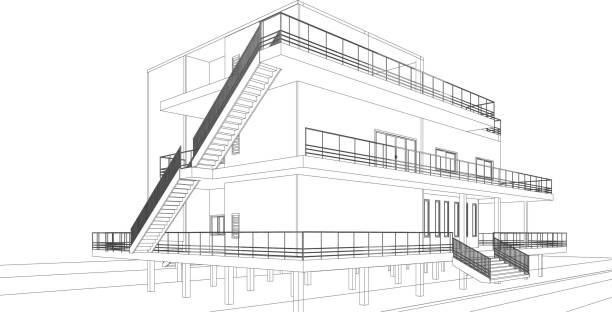When your project reaches the plan check stage, every day starts to count. A slow review can derail your construction schedule, delay financing, and frustrate your entire team. In Los Angeles, where city reviews already take time, even a small paperwork issue can stretch timelines by weeks.
Table of Contents
ToggleAt JDJ Consulting Group, we’ve seen how many delays can be avoided with better preparation. Most plan check bottlenecks come from simple issues—missing forms, unclear drawings, or unanswered city comments. The good news is, you can prevent most of them.
This guide explains how to reduce delays in plan check submittals through better organization, clear communication, and smart pre-submittal planning.
Why Plan Check Delays Happen (and Why They Matter)
A plan check is more than a formality. It’s a detailed review where multiple city departments—Planning, Building, Fire, and sometimes Public Works—examine your project for code compliance. When a submittal isn’t complete or formatted correctly, reviewers pause the process until you fix it. Every pause costs time.
Many applicants experience the same problems again and again. Knowing what causes those slowdowns helps you prepare a stronger submission from the start.

Common Causes of Plan Check Delays
Here are some of the most frequent issues that hold up building permits across Los Angeles:
Incomplete plan sets — Missing sheets, unsigned drawings, or outdated versions stop reviews instantly.
Zoning or code conflicts — Mismatched zoning data, setbacks, or building heights cause extra correction rounds.
Unclear file structures — Poorly named or formatted files confuse reviewers using ePlanLA.
Missing calculations or reports — Absent structural or energy data delay routing to other departments.
Slow department routing — Plans sometimes sit idle while waiting for sign-offs from Fire or Engineering.
Weak communication — Delays multiply when resubmittals don’t clearly respond to plan check comments.
To visualize how each factor affects review speed, the table below summarizes the most common delay points.
| Delay Cause | What It Means | Impact on Timeline |
|---|---|---|
| Incomplete plan set | Missing sheets or outdated versions | Review cannot start until fixed |
| Zoning or code conflict | Setbacks or heights don’t match zoning | Requires correction or variance |
| Unclear file structure | Files not labeled for ePlanLA | Slows routing between departments |
| Missing calculations | Energy or structural data not provided | Adds another review cycle |
| Department routing delay | Files waiting for inter-department sign-off | Adds days or weeks |
| Poor resubmittal response | Reviewer must repeat previous comments | Extends total review time |
Even short delays add up fast. A two-week hold for corrections can lead to missed contractor schedules, lost pricing, or extended loan interest. For larger projects, that can mean thousands of dollars per week. Getting things right the first time is always cheaper than catching up later.
Start Before You Submit: Pre-Submittal Planning That Prevents Delays
The fastest projects are the ones that plan ahead. Before uploading anything to ePlanLA, take time to confirm your zoning, collect clearances, and verify which departments will review your project. Pre-submittal planning doesn’t just make your packet cleaner—it also builds goodwill with city staff who recognize an organized applicant.
Average Plan Check Time by Project Type (in Weeks)
Source: Los Angeles Department of Building and Safety (LADBS)
Conduct a Zoning and Code Pre-Check
Every plan check starts with land-use compliance. Reviewing your zoning early helps you spot red flags before you spend on drawings or engineering. Confirm that your proposed use, height, and setbacks meet local requirements. In Los Angeles, this also includes overlay zones like Coastal, Hillside, and Fire Districts that trigger additional reviews.
When you perform a pre-check, focus on these items:
Zoning designation and allowable land use
Building height, lot coverage, and density limits
Parking, open space, or floor area ratio (FAR) requirements
Overlay or special district restrictions
Required department clearances, such as Fire or Public Works
Doing this homework early prevents zoning surprises that could stop your plan check halfway through. If the project is complex, a short consultation with LADBS or Planning can clarify code questions before you submit.
Hold a Pre-Application or Pre-Submittal Meeting
A quick meeting with the reviewing department can save weeks later. Pre-submittal meetings give your team a chance to confirm submittal requirements, discuss code interpretations, and identify any missing documents before the official upload. These meetings are optional—but smart applicants never skip them.
Bring these items to the discussion:
A one-page project summary with the address, zoning, and proposed scope
A preliminary site plan or schematic layout
Any specific code or clearance questions you want clarified
You can also use a short meeting agenda like this to stay organized:
| Agenda Item | Lead Person | Time (Minutes) |
|---|---|---|
| Project overview and goals | Architect or owner | 10 |
| Zoning and code discussion | Planner or expeditor | 20 |
| Feedback and next steps | City reviewer | 10 |
These meetings often reveal small details—like missing clearances or outdated forms—that would otherwise create weeks of delay. They also show reviewers that your team is coordinated and serious about meeting city standards.
Build a Complete Plan Check Submittal Packet
Once your zoning and scope are confirmed, focus on assembling a clean, complete packet. A well-structured submission allows reviewers to begin immediately instead of chasing missing files. Every jurisdiction has its own submittal checklist, but most require the same basic components.

What to Include in Your Plan Check Packet
Your packet should always contain:
A cover letter summarizing the project scope and referencing prior approvals
Signed and stamped plans from all required professionals
A title sheet listing project data, code editions, and occupancy group
Structural and energy calculations, plus soils reports if applicable
The permit application, fee receipt, and official submittal checklist
If any of these are missing, the intake team will usually reject or hold your submission. Including everything upfront signals that your project is ready for review.
Follow LADBS and ePlanLA Formatting Rules
For Los Angeles projects, LADBS uses ePlanLA, an online plan review platform. This means your files must meet specific digital standards.
Follow these simple rules:
Use consistent file names like:
ProjectName_Discipline_Rev_Date.pdfKeep sheet sizes uniform (typically 24×36 or 30×42)
Flatten PDFs to avoid upload errors
Add bookmarks to every section of your drawing set
Combine sheets by discipline (Architectural, Structural, MEP)
These steps help reviewers find what they need without delays caused by technical issues or file confusion.
Add These Two Tables to Every Submittal Packet
Organized documentation shows professionalism and prevents miscommunication. Including the following tables can cut days from the initial review.
1. Document Register Table
| File Name | Discipline | Author | Date | Pages | Notes |
|---|---|---|---|---|---|
| JDJ-MainPlans-A-2025.pdf | Architectural | ABC Design | 10/15/25 | 25 | Main plan set |
| JDJ-Struct-S-2025.pdf | Structural | XYZ Engineers | 10/15/25 | 18 | Structural calculations attached |
| JDJ-Energy-E-2025.pdf | Energy | GreenCal | 10/15/25 | 5 | Title 24 compliance |
2. Compliance Cross-Reference Table
| Plan Sheet | Code Reference | Description | Department |
|---|---|---|---|
| A1.1 | CBC 503.1 | Building height and area | Building |
| A2.3 | CFC 505.1 | Fire access and hydrant location | Fire |
| S3.2 | CBC 1604.3 | Structural design load | Structural |
Both tables act as quick guides for reviewers. They make it easy to confirm that the right information is included, improving accuracy and reducing unnecessary questions.
How City Departments Review Your Plan Check
Once you submit your drawings, your plans go through multiple city departments. Each department checks specific technical aspects to ensure your design complies with Los Angeles codes and policies. Knowing what each one looks for helps you prepare smarter — and reduce unnecessary back-and-forth.
Plan Check Process Flow
Understand how your project moves through city approvals 👇
- ✅ Step 1: Prepare and submit complete plans
- 🕓 Step 2: Initial city review (zoning, structural, fire)
- ✏️ Step 3: Respond to correction notices
- 📬 Step 4: Resubmit revised documents
- 🎯 Step 5: Final approval and permit issuance
Quick Quiz: Are You Plan Check Ready?
Typical Review Departments
Building and Safety (LADBS): Checks for structural and code compliance.
Planning Department: Confirms zoning, setbacks, and land-use restrictions.
Public Works: Reviews grading, drainage, and utility connections.
Fire Department: Focuses on access routes, hydrant placement, and fire safety.
Transportation (LADOT): Reviews traffic flow and driveway locations.
Bureau of Sanitation: Checks sewer, storm drain, and waste management plans.
Review Sequence
Most plan checks don’t happen all at once. The Building Department might clear your structural sheets, but Planning or Fire could still hold pending comments. That’s why tracking your case status online and communicating with reviewers helps you stay ahead.
| Department | Focus Area | Common Delay Cause |
|---|---|---|
| LADBS | Code compliance & structure | Missing structural calcs |
| Planning | Zoning & land use | Inconsistent site data |
| Fire | Access & hydrants | Unapproved fire lane width |
| Public Works | Grading & utilities | Incorrect slope calculations |
Pro Tip: If you’re unsure which department is causing delays, ask LADBS for a consolidated status sheet. It shows which clearances are complete, pending, or require revisions.
Key Documents That Speed Up Review
Submitting a complete plan check package saves weeks in the review process. The city reviewers need consistency — every sheet, calculation, and report should align with your permit type and site conditions.

Documents You Should Always Include
Cover Sheet: Include project address, scope, and permit number.
Architectural & Structural Sheets: Must be consistent in dimensions and layout.
Soils or Geotechnical Report: Required if grading or retaining walls are involved.
Energy Calculations (Title 24): Attach both summary and detailed forms.
Fire Sprinkler & Alarm Drawings: Submit if applicable to occupancy type.
Signed Owner’s Authorization: Mandatory for any plan under another owner’s parcel.
A missing or mismatched document can send your submittal back to the start. Even small errors — like forgetting the energy signature page — can pause the review for weeks.
| Document Type | Purpose | Reviewer | Delay Risk If Missing |
|---|---|---|---|
| Title 24 Forms | Energy compliance | LADBS | Medium |
| Geotechnical Report | Soil stability | Public Works | High |
| Fire Sprinkler Drawings | Fire safety | LAFD | High |
| Site Plan | Layout accuracy | Planning | Very High |
Tip from JDJ: Before uploading, rename files using clear, standardized titles — for example, “A-101_FloorPlan.pdf” or “S-201_FoundationDetails.pdf.” This helps city reviewers find and cross-reference them faster.
Common Communication Gaps Between Designers and City Reviewers
Most plan check delays don’t come from design flaws — they come from miscommunication. The way you respond to city comments can make or break your review timeline.
Where Gaps Usually Happen
Email Replies: Designers often reply late or without clear references to sheet numbers.
File Versions: Outdated PDFs or mixed revisions confuse reviewers.
Unclear Responses: Vague notes like “fixed” or “done” don’t help reviewers verify changes.
Scheduling Calls: Lack of direct follow-up meetings causes misunderstandings.
How to Communicate Better
Create a comment log showing each city note and your corresponding fix.
Reference exact sheet and detail numbers in your replies.
Use the city’s Online Plan Check (ePlanLA) to upload final responses in one bundle.
If possible, schedule a pre-clearance call with your assigned reviewer to confirm fixes before resubmitting.
Example of a Clear Comment Log Entry:
| Reviewer Note | Response Summary | Drawing Sheet | Status |
|---|---|---|---|
| “Verify exit door width for assembly space.” | Door width revised to 44”, meets code. | A-301 | Resolved |
Good communication reduces guesswork, builds trust with the reviewer, and often results in faster approvals.
How to Respond to Correction Notices Efficiently
Receiving correction notices can be stressful, but they’re not unusual. Most first-round plan checks come back with some notes — even for experienced design teams. The goal is to respond accurately, quickly, and clearly.
Steps to Handle Corrections the Right Way
Read Every Comment Carefully
Don’t assume all comments are errors. Reviewers may have legitimate technical or code-based points.Group Comments by Discipline
Separate architectural, structural, and MEP notes so the right person handles each issue.Create a Response Log
Use a simple spreadsheet to track each comment, who’s assigned, and when it was fixed.Highlight Changes on Plans
Use cloud or revision bubbles to make corrections easy for reviewers to spot.Add a Cover Letter
Briefly summarize all changes, reference sheet numbers, and note any clarifications.
Sample Correction Log Format
| Reviewer Comment | Your Response | Drawing Sheet | Status |
|---|---|---|---|
| “Provide fire-rated wall detail.” | Added detail, meets Section 714. | A-402 | Resolved |
| “Missing energy calcs.” | Title 24 report uploaded. | E-101 | Closed |
| “Show parking layout.” | Updated per code dimensions. | C-201 | Verified |
JDJ Insight: Plan reviewers appreciate clear documentation. When you make their job easier, approvals happen faster — and with fewer back-and-forth emails.
When to Escalate or Request Clarification from the City
Sometimes, a project stalls not because of missing items, but due to unclear or conflicting feedback. Knowing when (and how) to seek clarification can save weeks.

When Escalation Is Reasonable
When two departments give contradictory comments (e.g., Planning vs. Fire).
When your plan shows no updates in the portal for over 30 days.
When a reviewer’s comments don’t match current codes or previous clearances.
When your correction submission has been marked “Under Review” for an unusually long period.
How to Approach It Professionally
Start politely. Most reviewers are managing heavy workloads.
Send a concise email summarizing your issue and include permit number, address, and reviewer name.
Request a quick meeting or phone call for clarity rather than multiple emails.
Keep all correspondence documented for future reference.
Example Email Template
Subject: Clarification Request – Plan Check #2025-12345, 123 Main St.
Hello [Reviewer’s Name],
Thank you for your review. We’d like to clarify [specific issue]. Could we schedule a brief call to confirm the required revisions before resubmitting?
Best regards,
[Your Name]
[Your Role / Company]
Tip: If the issue remains unresolved, you can contact the Plan Check Supervisor or schedule an in-person consultation through LADBS.
Plan Check Time Estimator ⏱️
Enter project type to estimate review duration:
Top Reasons for Plan Check Delays
- 📑 Incomplete submittal packages
- 🧱 Outdated building codes in plan sets
- 📞 Lack of communication between architect and city reviewer
- 📅 Multiple rechecks due to missing responses
- 🔍 Misalignment between zoning and structural requirements
Visual summary for JDJ Consulting Group – 2025
Long-Term Strategies to Prevent Future Delays
Reducing plan check delays isn’t just about one project — it’s about improving how your team prepares and submits over time. Building better systems now saves significant time across future developments.
Implement Internal Standards
Use a submission checklist template for every project.
Maintain a library of approved detail sheets to reuse.
Keep a zoning and code update tracker to reflect LADBS changes each quarter.
Invest in Training
Train junior staff to understand city plan check logic — not just drafting.
Attend city workshops or webinars on updated codes or online systems.
Encourage project managers to stay updated with LADBS bulletins.
Work with Experienced Consultants
Teams that partner with local experts, like JDJ Consulting Group, typically avoid 80% of preventable review delays. Our consultants stay in touch with city departments daily and understand reviewer expectations for each permit type.
Quick Reference Table: Long-Term Delay Prevention
| Strategy | Outcome | Frequency |
|---|---|---|
| Internal QA reviews | Catch errors before submission | Every project |
| Standardized CAD layers | Improve plan consistency | Continuous |
| Pre-check consultant review | Identify missing documents | Before upload |
| City communication log | Maintain accountability | Every correction cycle |
Final Thought: Delays in Los Angeles plan checks are often avoidable with better coordination, complete documentation, and early expert involvement. The more proactive your process, the faster you move from concept to construction.
Conclusion
Delays in Los Angeles plan checks often come down to missing details and unclear communication — not design quality. A well-organized submittal can shave weeks off your approval timeline. Double-check every document, verify requirements, and keep a clear log of all corrections.
Teams that prepare carefully and respond quickly move through city reviews much faster. Whether it’s aligning your architectural sheets or coordinating with departments, proactive work upfront means fewer corrections later.
At JDJ Consulting Group, we’ve seen how small changes in process — like consistent zoning checks and early coordination — can improve project timelines. When your plan check runs smoothly, your project moves from concept to construction without delay.
Ready to move your Los Angeles project forward?
JDJ Consulting Group helps homeowners and developers cut through plan check delays by reviewing submittals, coordinating city communication, and managing permit progress.
Let’s make your next submission faster and stress-free.
Schedule a Consultation or call us directly at (818) 793-5058 to discuss your project timeline.
Monthly Plan Check Volume (LADBS)
Source: City of Los Angeles Building Department
FAQs — How to Reduce Delays in Plan Check Submittals
What causes delays in plan check approvals in Los Angeles?
Delays usually happen when submittals are incomplete or inconsistent. City reviewers spend extra time requesting missing documents or clarifications.
Common causes include:
Missing signatures or outdated forms
Uncoordinated architectural and structural drawings
Late responses to correction notices
Department-to-department approval dependencies
Preparing a full, consistent package before submission saves weeks in review time.
How can I speed up my plan check process at LADBS?
You can shorten review time by being proactive and organized.
Tips that help include:
Submitting all sheets and reports in one complete package
Using LADBS’s online tools to pre-screen for missing items
Responding to corrections quickly and clearly
Hiring a local expeditor familiar with department procedures
Fast and accurate communication with plan reviewers often makes the biggest difference.
Do different city departments review plans separately?
Yes. Each department checks its own scope before final approval.
For example:
Building & Safety: Structural, life-safety, and code compliance
Planning: Zoning and land use regulations
Fire Department: Access, hydrant placement, and safety measures
Public Works: Site access, grading, and utility coordination
Understanding this process helps schedule submittals more effectively.
What is the average plan check timeline in Los Angeles?
For standard residential projects, reviews take about 4–6 weeks per round. Larger or mixed-use projects may take 8–12 weeks or more.
These timelines depend on:
Project size and complexity
Department workloads
How quickly you respond to corrections
Well-prepared submittals can reduce total approval time by up to 30%.
How often do plan check corrections occur?
Nearly every project receives at least one round of corrections. That’s normal — it ensures compliance and safety.
To reduce rounds:
Address every comment clearly in your response letter
Attach updated sheets showing revisions
Avoid submitting partial fixes
Consistent, complete updates build reviewer trust and move your file faster.
Why do city reviewers reject plan check submittals?
Rejections happen when essential materials are missing or mislabeled.
Common rejection reasons:
Missing title blocks or sheet numbers
Incorrect zoning references
Outdated or unsigned forms
Poor sheet formatting that confuses reviewers
A pre-check review by a consultant can prevent these simple errors.
Can I submit my plan check online in Los Angeles?
Yes. LADBS offers Electronic Plan Check (EPC) for most project types. It allows file uploads, digital markups, and online corrections.
Benefits include:
Faster document exchange
Real-time status tracking
Fewer physical visits to city offices
Digital submissions work best when drawings are well-labeled and compressed.
What documents are required for a complete plan check submittal?
Most projects need:
Architectural, structural, and MEP plans
Title 24 energy compliance documents
Soils or grading reports (if applicable)
Signed applications and ownership forms
Check LADBS’s current checklist before submitting — missing one document can trigger an automatic hold.
Does hiring a permit expeditor really help reduce delays?
Yes. A local expeditor understands each department’s workflow.
They can:
Identify missing documents before submittal
Communicate directly with plan check engineers
Track project status and escalate if delays occur
Expeditors save time, especially when multiple city agencies are involved.
What’s the difference between plan check and building permit approval?
Plan check focuses on reviewing designs for compliance. Permit approval is the final authorization to start construction.
The sequence typically goes:
Plan check submittal
Department reviews and corrections
Final sign-offs
Permit issuance
Smooth plan check reviews lead to faster permit releases.
How can poor communication delay plan check approvals?
Delays often happen when project teams or reviewers lack clear communication. If your designer, engineer, or city contact aren’t aligned, corrections can overlap or contradict.
To avoid this:
Keep a shared project log
Confirm interpretations before revising drawings
Summarize corrections in clear memos
Transparent updates prevent misunderstandings that cause extra review cycles.
Do zoning errors affect plan check approval timelines?
Yes. Zoning mistakes can stop your review completely. Incorrect setbacks or height limits must be fixed through Planning before Building continues.
Quick tip: Always verify your property’s zoning data using ZIMAS or consult a zoning specialist before you apply.
Are plan check fees refundable if a project is delayed or withdrawn?
Typically, no. Once LADBS has started reviewing, plan check fees are non-refundable. However, you can request file holds or extensions if your project needs more time to respond. Always verify payment policies before canceling or resubmitting.
What role does the applicant play during the review process?
The applicant ensures all consultant and design teams respond on time.
They must:
Upload updated plans
Track communication through the online portal
Pay recheck fees when applicable
Staying engaged with reviewers helps maintain review momentum.
How can architects help reduce plan check delays?
Architects can lead coordination across disciplines. By ensuring all drawings are consistent, they minimize conflicting information.
Good architectural practices include:
Aligning notes and scales across sheets
Coordinating consultant input before submittal
Reviewing LADBS correction patterns from past projects
Experienced architects usually see faster approvals.
Can plan check timelines vary by project type?
Yes. Each project type has its own review pace.
| Project Type | Typical Plan Check Duration |
|---|---|
| Small residential remodel | 3–5 weeks |
| New single-family home | 5–8 weeks |
| Mixed-use / multifamily | 8–12+ weeks |
| Commercial / tenant improvement | 6–10 weeks |
Commercial and hillside projects often require more departmental coordination.
What happens after all plan check corrections are cleared?
Once all corrections are approved:
LADBS issues a “Ready to Issue” status.
You pay the final permit fees.
Your building permit is released for construction.
Keep your approval documents safe — inspectors will need them during construction.
How often should I follow up with LADBS during review?
Follow up every two to three weeks, or after any correction upload. This shows responsiveness and helps catch small issues early. Polite, clear communication can help reviewers prioritize your file.
Can missing consultant reports delay plan check approvals?
Absolutely. Missing geotechnical, energy, or drainage reports are common delay triggers.
Before submittal:
Confirm all consultant files are attached
Label each report properly
Check that certifications are signed and dated
A complete report package prevents review suspension notices.
Who can help manage plan check submittals for Los Angeles projects?
Professional expeditors and planning consultants like JDJ Consulting Group specialize in managing submittals.
They coordinate between:
Architects
Engineers
City reviewers
Property owners
This ensures your project moves through LADBS with fewer interruptions and faster approvals.






